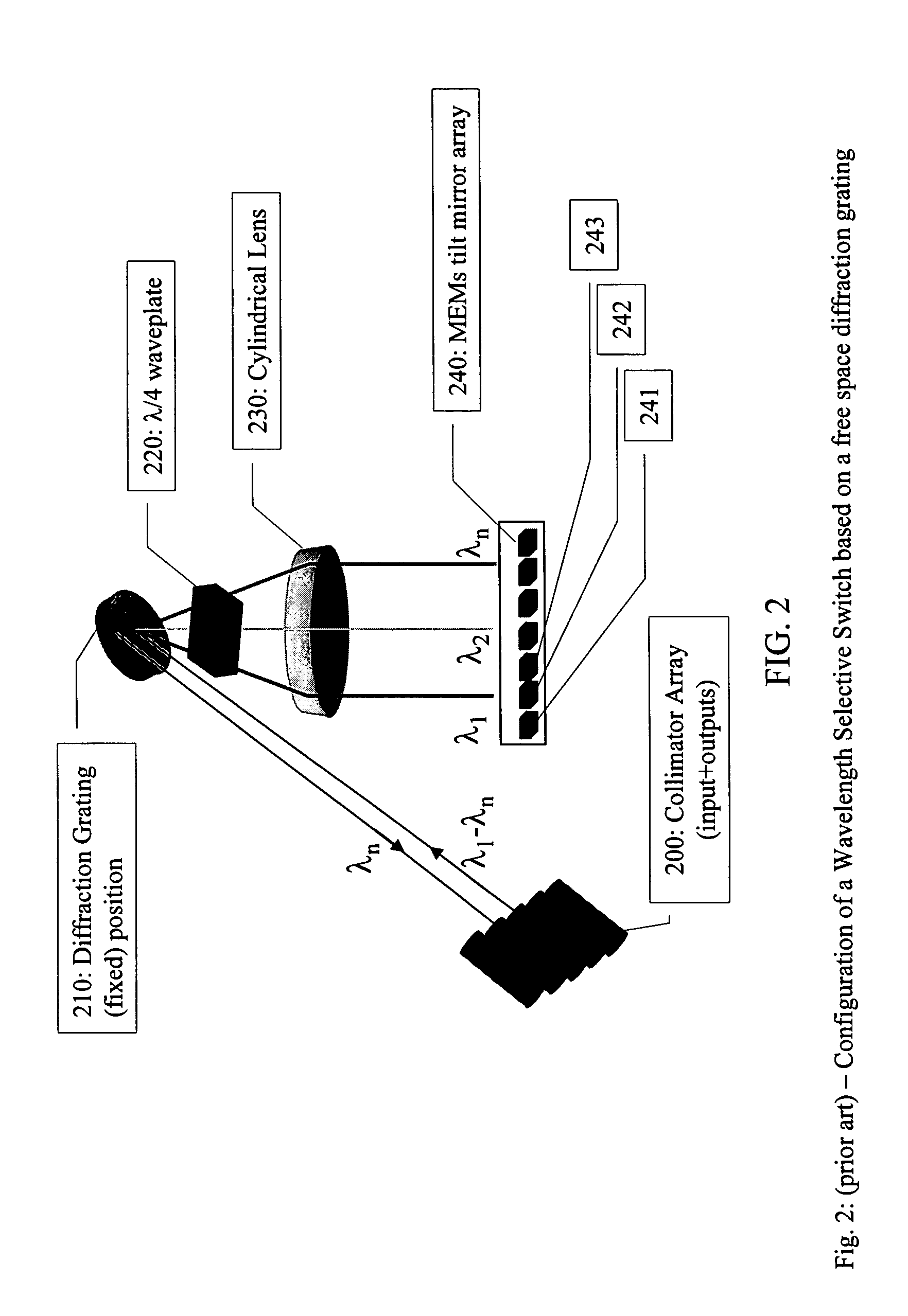Tunable optical routing systems
a routing system and optical communication technology, applied in optics, instruments, optical light guides, etc., can solve the problems of low cost and low insertion loss, low per-wavelength routing flexibility of a wss, and the cost of oeo regeneration
- Summary
- Abstract
- Description
- Claims
- Application Information
AI Technical Summary
Benefits of technology
Problems solved by technology
Method used
Image
Examples
Embodiment Construction
[0048]In accordance with the present invention, a Hitless Tunable Filter (HTF) technology is provided to flexibly route optical signals. It provides wavelength-selective routing functions in a much simpler and lower cost structure than currently available from existing WSS technology. Although this simplification somewhat reduces the functionality relative to a WSS, it retains a significant level of flexibility that would make it a superior choice for cost-sensitive network applications as it can be provided at a fraction of the cost, with a significantly reduced insertion loss, and with low polarization sensitivity as is required for virtually all communication system applications.
[0049]There are multiple technology platforms which have been used to demonstrate the functionality of a WSS, including free space optics with a diffraction grating (see U.S. Pat. Nos. 5,960,133, 6,097,859), free space optics with thin film filters (U.S. Pat. No. 6,631,222), and integrated photonic lightw...
PUM
 Login to View More
Login to View More Abstract
Description
Claims
Application Information
 Login to View More
Login to View More - R&D
- Intellectual Property
- Life Sciences
- Materials
- Tech Scout
- Unparalleled Data Quality
- Higher Quality Content
- 60% Fewer Hallucinations
Browse by: Latest US Patents, China's latest patents, Technical Efficacy Thesaurus, Application Domain, Technology Topic, Popular Technical Reports.
© 2025 PatSnap. All rights reserved.Legal|Privacy policy|Modern Slavery Act Transparency Statement|Sitemap|About US| Contact US: help@patsnap.com



